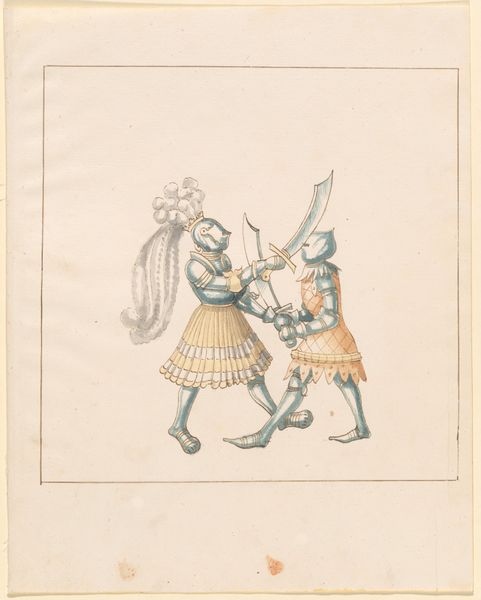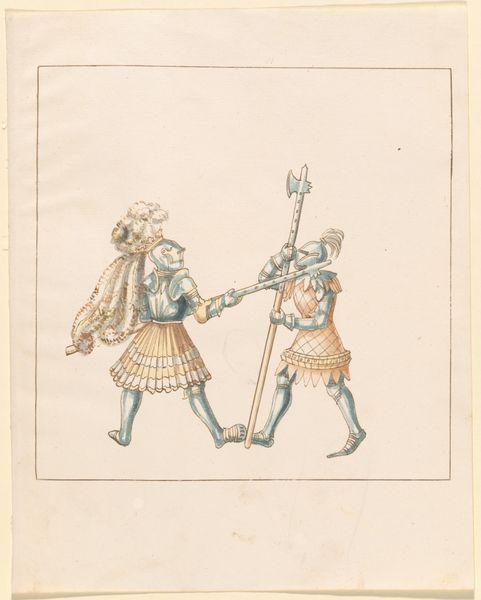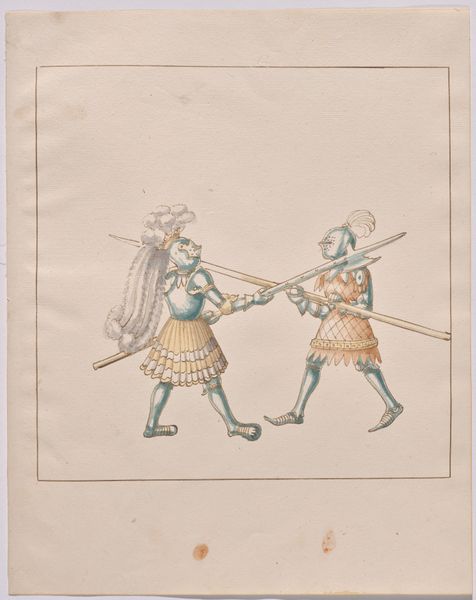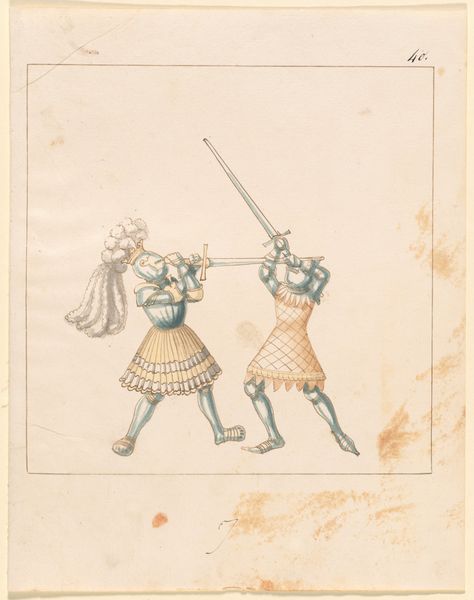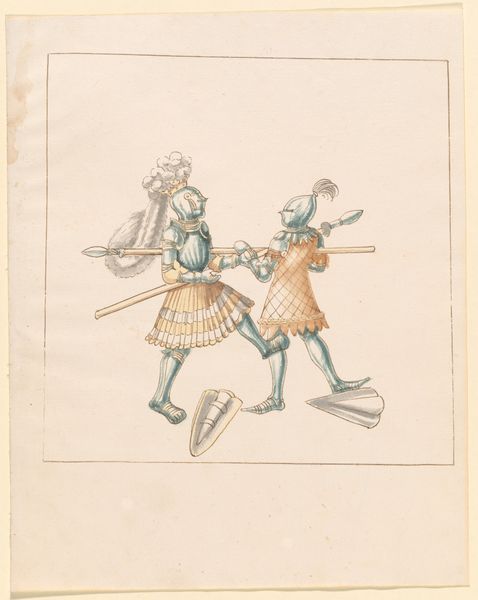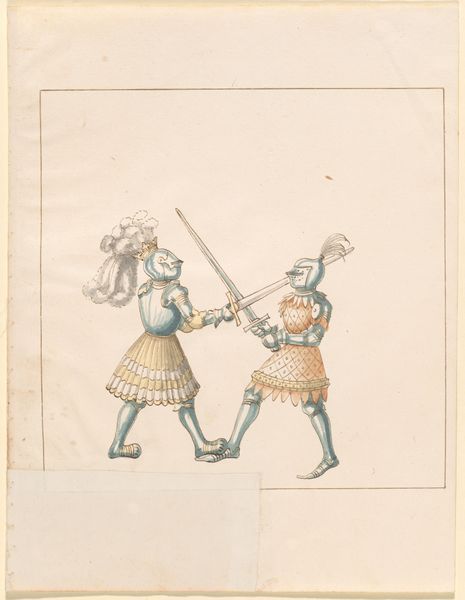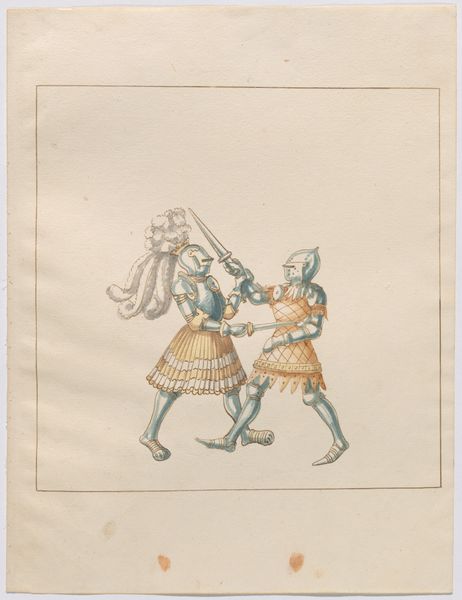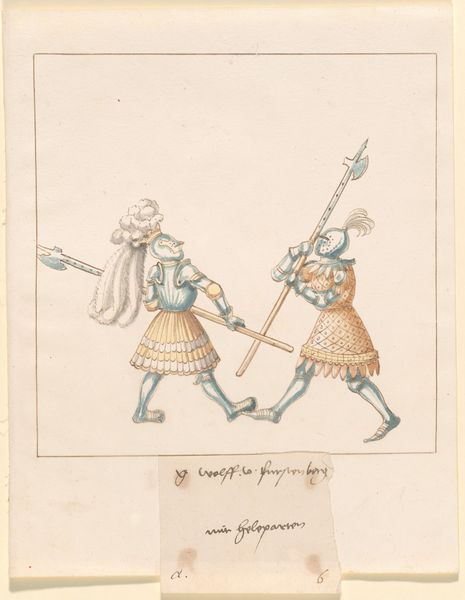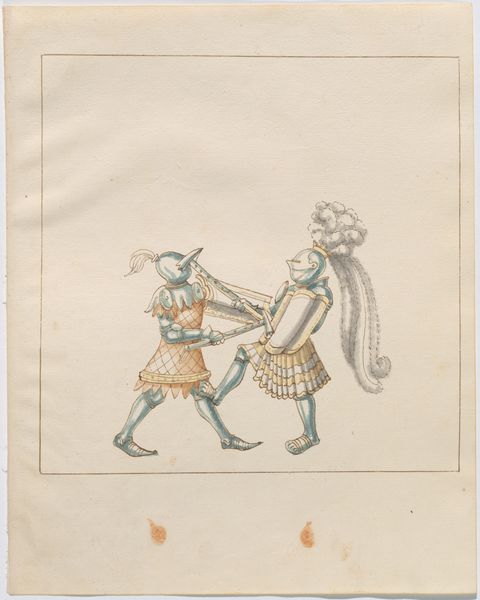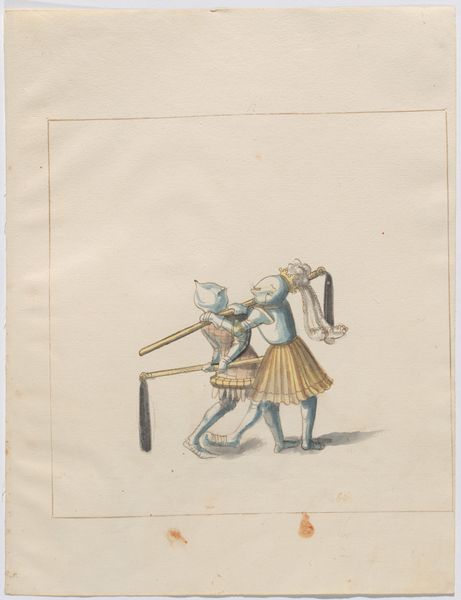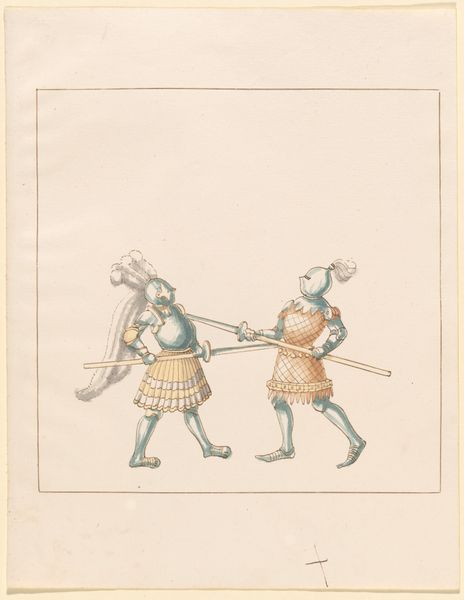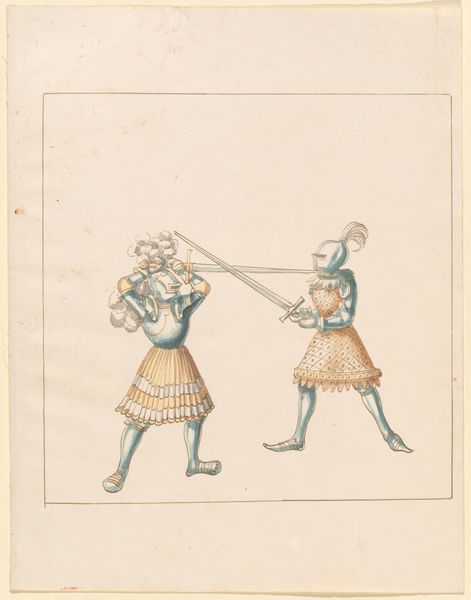
drawing
#
drawing
#
figuration
#
11_renaissance
#
history-painting
#
italian-renaissance
Dimensions: sheet: 33 × 26.2 cm (13 × 10 5/16 in.)
Copyright: National Gallery of Art: CC0 1.0
Curator: Here we have an interesting drawing titled "Foot Combat with Maces and Tartsche Shields," made around 1512-1515 by an anonymous artist. Editor: Immediately striking is the tension captured in such a confined space. The combatants, though stylized, possess a certain dynamic quality. It almost feels claustrophobic. Curator: The combat itself speaks volumes. Maces were brutal weapons; their use reflects a certain cultural attitude toward violence. Consider the tschartsche shields; these weren't just for defense but active tools to parry blows. The ritualistic nature of foot combat held deep cultural significance as well, connecting personal honor to societal structure. Editor: Focusing on the lines, the drawing is wonderfully detailed, especially considering its age. Note the rendering of the armor, particularly how the light catches the metallic surfaces. It's a fascinating study in texture and form, despite its small size. Curator: Notice also that the figures wear flamboyant plumes and decorative flourishes, almost as if trying to turn violence into something attractive and glamorous. And in this way, conflict as a source of beauty isn't specific to this cultural context; you might think of Marinetti and other early 20th-century Italian futurists. Editor: You mention "flamboyant plumes." This immediately gives rise to interesting aesthetic contradictions. We're given armor for protection that's in turn accessorized in ways that compromise its functional design. Does this signify social posturing more than practical consideration? The work strikes me as visually interesting in precisely these discordant ways. Curator: This clash indeed resonates with many levels. Social, perhaps personal, psychological… What's intriguing here, for me, is the persistent presence of martial and even aristocratic display in European consciousness. Even today, the vestiges of chivalric ideals linger within notions of honor and conflict. Editor: A very interesting observation. Now, viewing "Foot Combat with Maces and Tartsche Shields" one last time, I am taken once again by the artist’s ability to animate what would otherwise be a very stiff, formal arrangement of pictorial forms. Curator: It makes you ponder the timeless question, doesn't it: What do we take away from art of violence made centuries ago? Do we observe violence and hope for catharsis? The Italian Renaissance artist makes that so poignant, doesn't he?
Comments
No comments
Be the first to comment and join the conversation on the ultimate creative platform.
